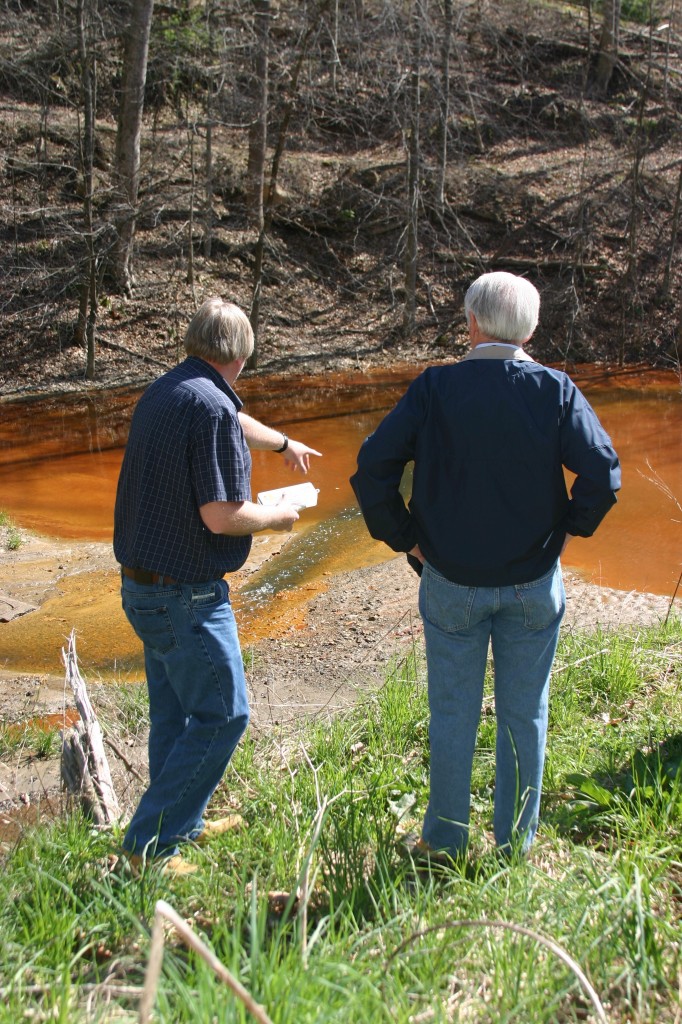Dear Gortimer,
Returned is your wonderful manuscript, “The phantom map,” with some minor GUM revisions in thick red ink. You may be interested in the story behind the demise of the great South East Coal Company that you mention us passing nearby Cubbard’s Rock.
The company was incorporated in 1915, when Henry LaViers, an immigrant from Wales, secured the mineral rights needed to organize five coal camps. The most well known of these, apparently still generally intact, is located at Seco (renamed “South East Coal Company Operation 1” upon its purchase in 1915), on the banks of Boone Fork, a tributary of the Kentucky River’s North Fork and not far from Whitesburg in Letcher County.
South East Coal remained a family business; Henry’s son Harry LaViers was a particularly hands on boss. In the late 70s, one report relates, as retaliation against his workers’ attempts to better their working conditions, Harry “got into trouble for running down a picket line with a coal truck.” By this time, South East was selling most of its coal, so-called “compliance coal” because its use absolves power companies from installing expensive sulfur dioxide scrubbers, to the Kentucky Utilities Company (KU).
The LaViers family interest in the health of their workers continued into the 1990s, when on October 12, 1992, Harry filed for Chapter 11 bankruptcy. This act authorized South East Coal to pay its creditors (banks, individual investors) by selling off its assets, “free and clear of any and all liabilities whatsoever…including, but not limited to, any successor liability for claims for benefits under the Federal Black Lung Benefits Act or the Kentucky Worker’s Compensation Act.”
This last statement was important to DLX, inc., the company who shelled out $5.75 million, paid out in lump sums to several creditors, for South East Coal’s preparation plant at Irvine, the Lexington office, the mine and all other real property, inventory, equipment and other intangibles necessary to keep coal production profitably engaged. While DLX bought the land and operations, they were not beholden to the purchase of South East Coal’s labor history. In the case of The United Mine Workers of America v. South East Coal Company, Inc.; DLX, Inc.; and Newco, Inc., this interpretation translated into a $707,315.06 savings, or the amount DLX did not have to pay into a required pension fund for former miners working on the site.
DLX, Inc., was a real family affair. Formed only months before purchasing South East Coal’s assets, the Kentucky corporation listed Donald and Stephen LaViers as its owners and operators. Papa Harry LaViers sold his bankrupt company, its assets any way, to his own sons. This turned out to be a shrewd move: Sons Donald and Stephen, it seems, were also vice-presidents and (indirectly) large stock holders in the South East outfit. In purchasing South East Coal assets used to pay back creditors and investors, and simultaneously casting off the obligations Papa Harry’s company neglected to pay, the brothers were, essentially, paying off themselves.
To be sure, I can’t say for sure if the site we passed on the Kentucky was the same South East Coal Company quarters. The tipple, acidic water and markings on the barge map lead me to believe that it was; that we passed what the Mine Workers lawsuit referred to as the “preparation plant at Irvine.”
I should look closer at it. Thinking back on our last trip, I recall my revulsion at passing the bend around Cubbard Rock. The orange rock banks, scalded and utterly lacking life, brought to mind that iconic image of Rick Handshoe and Steve Beshear in Floyd County, their backs to the camera, staring at a settling pond nearby Rick’s home, the water reflecting back orange and clear. At Cubbard’s bend, slackwatering past bankrupt South East Coal’s orange, leaky rocks, I got a better sense of what Rick and the Governor were looking at. Death.
I wasn’t just revolted; I was also pissed. Earlier that afternoon while surveying our Kentucky River barge map, I had made a mental note to drop a line around Cubbard, tether up to the boat, ease into the water and get started on a river rat kind of day. Those plans, along with any notions of fishing for the next bend-and-a-half, were snuffed out. South East Coal now has the distinction of being the second coal plant to fuck up my summer plans for a quick dash of Kentucky Bathing.
At any rate. Thanks for sending over your piece. It was a most delightful read and nice treasure of an even more fantastical weekend.
Take it easy, but take it,
Rupp





Sportimer Gotts
I don’t suppose your article was meant to be objective or even 100% based in fact; and in that regard you were successful.
No, I did not work for the company or any company affiliated with it, but I am from Letcher County.
DANNY L JOHNSON
I WORKED THERE 25 YEARS I TRAVELED THROUGH 43 STATES FOR THEM HAULING STUFF IN FOR SOUTH EAST COAL COMPANY
w.r. dozier
much enjoyed the kentucky river series, particularly the last two installments–sites not mentioned: sweet lick knob (two paintings, one from the river, by paul sawyer; stone piers that supported rinby trestle at west irvine (in 1894, elic richardson was lynched from the bridge); old cane springs country on madison co. side near lock 11; the mouth of otter creek where all effluent produced by madison co. will soon flow–also on aug. 6th, the 10th and LAST southeast coal workers reunion will take place in the afternoon on broadway ave., irvine, ky, in the old elementary school that’s been converted into apts., i think–thank you–w.r.d.